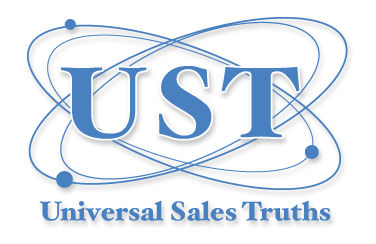In all seriousness, there is no single aspect of professional selling more important than developing effective listening habits. This is true not only in sales but in life in general. God gave us two ears and one mouth for good reason. Yet for some strange reason many sales folks feel the need to talk more than listen. I suppose it goes with the territory of being a salesperson. We sometimes feel people expect us to be outgoing and always chewing someone’s ear off.
If you have read traditional sales technique books, they talk about continuing to talk past the point of sale. This is when your prospect tells you he would like to purchase your product, but instead of proceeding with the required paperwork to finalize the transaction you can’t help but continue to explain other features of the product. He then hears something come out of your mouth that discourages him from continuing with the purchase. Maybe a feature you think is great is something he dislikes, so he changes his mind. This is a gross example of not listening. After all, if your objective is to sell, and the prospect tells you he wants to buy, then why are you still talking?
As a professional salesperson your objective is to solve your clients’ problems with your product or service. This should not be a news flash. Any book on selling will tell you that. Yet how can you solve your prospects’ problems if you don’t know what they are? Too many times you sit down with your prospect and begin by telling him how great your company and products are. You go through a canned presentation that might take an hour to present and feel delighted that you manage to get through the entire thing without one single question. When asked how the meeting went, you tell your manager it went great, and you are fairly sure you will be doing business with the prospect in the future. You’ve convinced yourself that if your prospect listened to your entire pitch, he’s convinced you have a great product and will soon be ordering. Your presentation is so compelling, the prospect may have faxed in an order by now.
What you don’t realize is your prospect most likely doesn’t remember much if anything from your presentation. In fact if he didn’t ask any questions, that’s a sure sign your presentation did not address any compelling needs he might have had. Statistics indicate that even if your prospect was intrigued by your presentation, he would still forget much of it after you left the office. Yet many sales folks are compelled to get through their PowerPoint’s by hook or by crook. We have our agenda. We are convinced we know what’s right for the prospect, and if they listen to our presentations they will get it and buy our product or service.
Kevin, the former CIO at Allegis Group, related a story wherein a salesperson was moving through his presentation in a rapid fashion due to a time constraint. Kevin politely interrupted him and said he was not interested in the particular software the salesperson was presenting but was interested in another software product that the vendor offered. Kevin expected the sales rep to move on to the other product, but instead he finished the presentation on the product in which Kevin had no interest. This scenario is unfortunately repeated over and over by sales people. On almost every interview I’ve had with key decision makers, I’ve heard the same story. Is it that we don’t listen, or are we so convinced that if we get through our prepared presentations, our prospects will finally see the light? Why wouldn’t we take the time to listen to what the prospect would like to purchase? Why do we sometimes think we know what the prospect wants to purchase?
So let’s get back to the whole point of this post. If you are to solve a prospect’s problem with your product or service, you first need to understand what the problem is. Logically this means you can’t march into his office and make a presentation. Why? Because you don’t know what to present. Not all prospects have the same problems. They may be similar, but you will never know for sure unless you know how to ask the right questions and then sit back and listen. So before you march in with your perfect presentation, the first step should be to understand what challenges and issues this prospect is facing. Depending on the account and organization structure, this might involve several meetings. But the more you LISTEN and therefore understand your prospects business, the better chance you have of crafting a winning presentation and proposal.
DO MORE LISTENING THAN TALKING!
